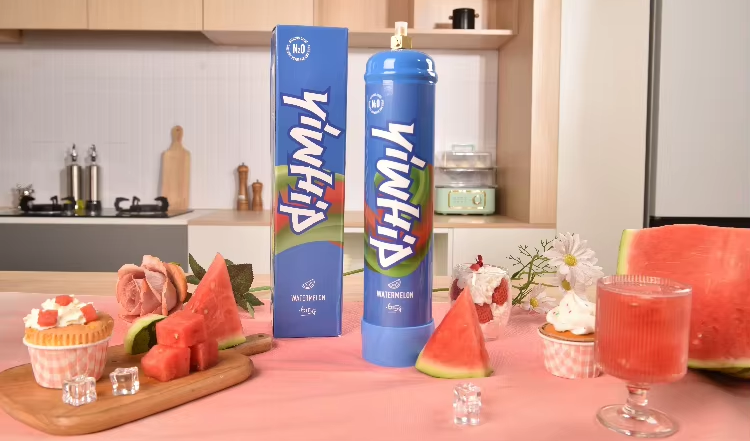Why Whipped Cream Canisters Matter for Perfect Homemade Desserts
Ever wondered how your favorite pastry shop or artisanal café creates that airy, velvety whipped cream so effortlessly? The **secret weapon** behind this consistency isn’t magic—it’s the strategic use of a modern kitchen gadget: the **whipped cream canister**, often overlooked by home bakers. These pressurized containers, powered by nitrous oxide chargers, streamline the process of crafting café-style whipped toppings at home. Whether you’re making crème brûlée, affogatos, meringues, or simply enhancing a warm dessert with texture and coolness, whipped cream canisters offer both convenience and culinary sophistication.
For the passionate cook who craves authenticity, understanding **how a whip cream dispenser works** opens the doorway to restaurant-caliber baking from home—a game-changer, particularly for dessert-centric cuisines popular among gourmet households in Ecuador.
The Rise of Whipped Cream Canisters Across Latin America
While European and North American pastry scenes have long integrated whipped cream as a staple garnish and ingredient, Latin America is now catching on fast—Ecuador included. Homeowners here have discovered that whipping cream directly inside the canister delivers smoother textures without manual labor or over-aerating it, which traditional beaters might otherwise cause.
**Whipped cream dispensers aren’t only used for coffee toppings and cakes** these days. Creative cooks in Cuenca and Guayaquil are incorporating them into chilled cocktails, savory foam-based sauces, and even artisanal chocolate truffles drizzled with spiced whipped mascarpone. These **canister-driven gastronomical twists** add novelty while respecting regional flavor traditions—an exciting evolution within Ecuadorean kitchens.
Choosing the Right Whip Cream Dispenser: Materials & Models
Before jumping head-first into frothy experimentation, selecting a quality cream dispenser model is vital. You won’t find just one kind—in fact, you may want several depending on how frequently you bake or cater:
- Stainless Steel vs Plastic: Professionals prefer stainless steel canisters since they resist pressure damage, are durable, easier to sanitize, and don’t absorb residual aromas like cheaper materials might.
- Certification standards also count when sourcing online—especially if purchasing import versions from Europe or Asia. Brands adhering to **ISO 22000 certification ensure safe and regulated manufacturing practices**, especially critical if handling hot mixtures later on.
**Key capacity levels vary too**—small (500ml) ones ideal for individual desserts, and larger (1L or 2L variants) designed for family feasts or weekend gatherings under banana trees during Quito afternoons. Your intended frequency and serving size should drive purchase choices.
Chilling vs. Heating Methods: Mastering Both Worlds with One Tool
Here’s what most first-time buyers overlook: whipped cream machines aren’t solely about cold-serve applications. By adjusting ingredients—think custard creams, melted caramel ganaches, or herb-infused foams—you suddenly unlock versatile temperature-controlled applications.
To serve chilled creams or airy mousses instantly:
- Cool the dispensed cream thoroughly before chilling
- Aim for 36-40°F storage temperature pre-use
Conversely, for **warm savory foams** over grilled meats or sweet emulsified reductions alongside flan dishes, warming components before insertion and adjusting N2O charge amounts will yield different outcomes.
Crafting Signature Toppings with Precision Flavors
Once the mechanics click and confidence grows around proper canister charging safety techniques, the door swings wide open: infused whipping bases become next-level enhancements.
Consider blending unconventional extracts like local **achiote paste**, cinnamon, or even powdered lucuma root into cream blends before gassing them inside dispensers for bold visual impact paired with tropical tastes native to **Ecuadorian highland cuisine**.
For **bolder textures, experiment with alcohol additions**: liqueurs, cachaça reductions, or even small drops of dark espresso shots create visually layered finishes—each swirl of freshly expelled foam whispers complexity and elegance, far above run-of-the-mill vanilla spritzes from cans found in typical grocers abroad.
Tips for Cleaning & Maintaining Whipping Canisters
A well-functioning dispenser needs **consistent cleaning attention**. After every few sessions, disassemble the top mechanism, soak in lukewarm water mixed with mild soap, then re-lube O-rings quarterly with food-grade grease. Never submerge motor units or metal valves entirely—they risk oxidation and rusting.
Pro Tip #1: Invest in microfiber brushes made specifically for valve gaps and inner seams—those tricky places where fat residue or sugar clumps hide—and sterilize regularly.
Additionally, always dry the unit before storing to avoid accidental bacterial formation between cooking stints—even minor lapses affect taste integrity upon reuse down the line.
The Future of Kitchen Gadgets and the Impact of AI in Whipped Innovation
Looking ahead, **tech-integrated cream canisters may arrive**, equipped with Bluetooth-connected settings to adjust foam textures automatically based on selected dessert modes through your smartphone apps! Imagine choosing a “caramel foam setting" tailored via AI, ensuring the perfect rise without guesswork. Though such devices are still niche and mostly prototype-grade today across global markets outside Scandinavia and Korea, it’s only matter of time before Ecuadorians get introduced to intelligent whippable design.
In essence, **whipped cream canisters aren't fleeting trends**: their utility expands daily in creative households. As consumer demand for premium DIY tools rises locally and globally, these nifty dispensers symbolize the merging between heritage recipes and digital-age ingenuity—all within reach on a modest counter-top.
Making Gourmet Whipped Magic More Achievable Than Ever
So if your goal remains creating homemade versions of those lavish Ecuador-inspired tamales wrapped in plantain leaves or deconstructed tiramisù layered artfully like fine jewelry displays in your glass fridge—the whipped cream canister becomes your silent co-author.
With proper use and care, your kitchen arsenal can transcend expectations; no longer does excellence rest solely within commercial bakeries in Quito or coastal seafood cafés of Salinas. Now, **precision-froth mastery sits mere taps away**, ready each morning on your island bench beside your ceiba wood spoons, Andean spice racks, and ceramic molino hand grinders. Welcome aboard an elevated era of Ecuadorian kitchen science—one dollop at a time.
Conclusion:
Whether you're revamping ancestral desserts or crafting modern fusion treats, a whipped cream canister transforms ordinary ingredients into extraordinary edible moments right at home. This gadget proves not merely convenient, but essential to evolving how families and professional chefs alike express sweetness—and in doing so, redefine what "café-quality" really means, particularly across kitchens in Ecuador today. Start smart, start precise—and yes—dream wildly delicious.

